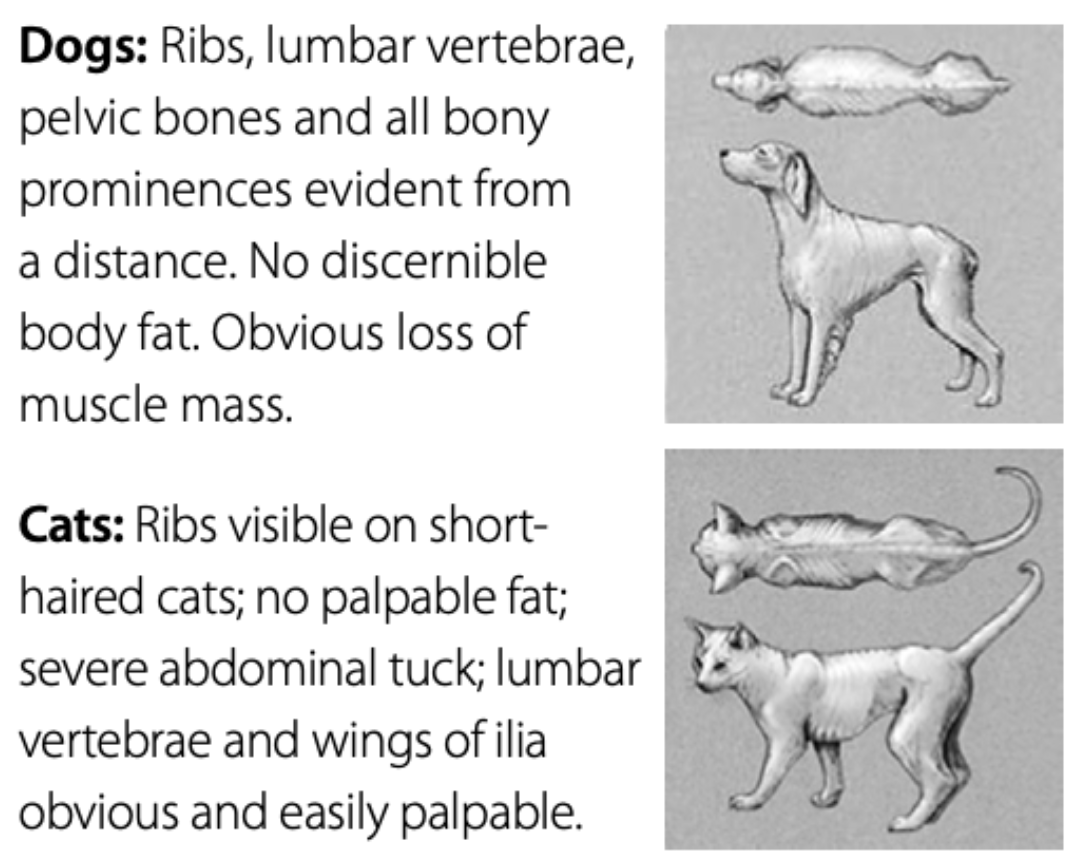When it comes to assessing your pet’s health, body condition is an important factor. You want to make sure your pet is in a healthy weight range, and one way to do this is to assess their body condition score (BCS). Think of the BCS like the body mass index (BMI) in humans; it is a tool that helps evaluate body fat and body condition.
What Is The Scale For Scoring?
There is an organized system of evaluating BCS, which utilizes a scale from 1-9. Each number is associated with a body condition. Here are the numbers broken down:
1 – Emaciated
2 – Very thin
3 – Thin
4 – Underweight
4.5/5 – Ideal wight
6 – Overweight
8 – Heavy
8 – Obese
9 – Severely Obese
So, you can see that the BCS provides a scale for both ends of the body condition spectrum.
Paws to consider: Each number on the scale is associated with a visual representation of body condition so you can better identify where your pet falls on the scale. Access the BCS chart here.

Example of BCS chart courtesy of AAHA.org
Assigning a score happens with a visual and physical assessment. Using the BCS chart from the above link to guide you, you will first look at your pet from above. Can you see a waistline that curves in behind the rib cage, similar to an hourglass figure? Then you will sit on the floor and get a look at your pet from the side. Look at the tummy- is there a slant upwards between the rib cage and back legs, or does the tummy sag? Utilize the pictures on the BCS chart to help you better match what your pet’s body condition looks like visually.
Next, you will use your hands to perform a physical assessment of your pet’s body condition. You want to first feel the rib area. Are they easy or difficult to feel? Is there a thin layer of fat covering them or perhaps a thick layer? Now take your hands and run them down your pet’s backbone and perform the same type of evaluation as you did with the ribs. Next, you can take your hands and run them over your pet’s rump to feel the pelvic bones. Again, this area should be assessed in a similar fashion as the ribs.
What To Do With Your Pet’s BCS
Now that you have an idea of what your pet’s BCS is, you can use this information to get a better idea of what your pet needs. You can partner with your veterinarian to create a specific plan that addresses your pet’s individual needs when it comes to nutrition, weight management, exercise, and more! Each pet is unique, and there may be other underlying issues that can be found upon physical examination or even diagnostics that your veterinarian can perform.
At VCPI, we offer custom nutritional consultations that will help answer any questions about your pet’s nutritional needs, what supplements they could benefit from taking, how much exercise they should be getting, and more!
If you are interested in a custom nutrition consultation, click here.
We can’t wait to partner with you in your pet’s health journey!

